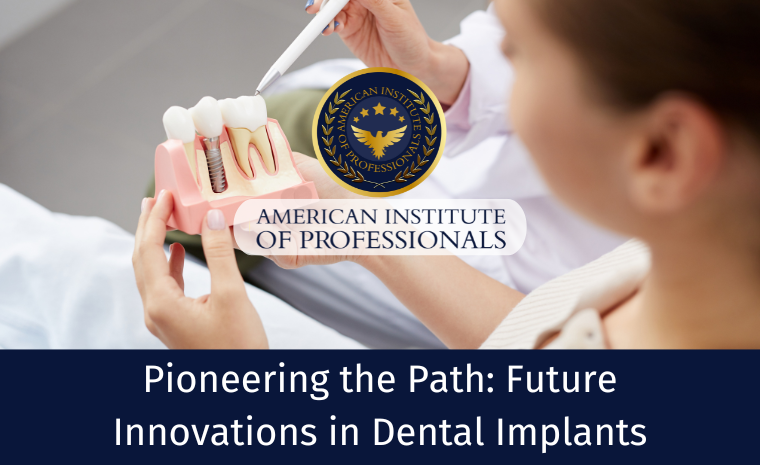Imagine a scenario: you’ve lost a tooth due to an accident, decay, or any other reason, and you find yourself longing for a natural-looking replacement that feels just like your real teeth.
In a situation where your smile has become a handicap for your wellness, dental implants can make the difference.
As a revolutionary solution to restoring your smile and oral health, dental implants not only offer a lifelike appearance, but they also provide unparalleled stability and functionality, allowing you to eat, speak, and smile confidently.
In this blog, we’ll delve into the intricacies of dental implants, explore the innovations for these procedures, the emerging technologies, and how you need an expert to get the best smile result.
Looking for a dental implant expert?
Dental Implants Innovations
The recent innovations in dental implants have significantly transformed the field of dentistry, offering patients a more effective and natural-looking solution for missing teeth.
The story of dental implants dates back thousands of years, with evidence of early attempts using materials like seashells and carved stones to replace missing human teeth. However, it wasn’t until the 20th century that significant advancements took place.
A Jump Into Dental Implants Story
The first modern dental implants were developed in the 1950s by Dr. Per-Ingvar Brånemark, a Swedish orthopedic surgeon. He accidentally discovered osseointegration, the process by which bone fuses with titanium while studying bone healing and regeneration.
This laid the foundation for modern dental implant technology. In 1965, Dr. Brånemark placed the first successful titanium dental implant in a human patient.
The initial materials used on dental implants were primarily metals like titanium due to their biocompatibility and strength.
Over time, research and technological advancements led to the development of improved materials, such as zirconia and ceramic implants, which offer more natural aesthetics and reduce risks of allergic reactions.
In recent years, dental implant innovations have focused on enhancing the implant surface for better osseointegration, shortening treatment times, and improving the overall patient experience.
Below, we enumerate some of the latest innovations in dental implants:
- Immediate Loading Implants: These pioneering implants represent a significant leap forward in dental implant procedures. They facilitate the immediate placement of teeth following surgery, thereby substantially curtailing the conventional healing period.
- Mini Implants: The advent of miniaturized implants offers a less invasive alternative to traditional counterparts. Their diminutive size makes them particularly well-suited for providing support to smaller dental appliances, such as dentures.
- Zygomatic Implants: A specialized category of dental implants, zygomatic implants diverge from the traditional path by being anchored within the cheekbone instead of the jawbone. Zygomatic implants broaden the scope of implant-based solutions, accommodating a wider range of cases.
- Computer-Guided Surgery: The integration of cutting-edge technology into dental implantology is exemplified by computer-guided surgery. This sophisticated approach harnesses the power of 3D imaging to enable precise implant placement. As a result, complications are minimized, and patients experience a swifter and more comfortable recovery.
- Nano-coated Implants: At the forefront of implant material innovation lies nano-coated dental implants. These implants feature a delicate yet potent coating of nanoparticles, enhancing their durability and reducing the susceptibility to infection.
In the United States, there are currently 3 million people with implants. This number is increasing by 500,000 each year. The market for dental implants was projected to continue growing due to factors such as an aging population, increased oral hygiene and health awareness, and advancements in implant technology.

Emerging Implant Technologies
In recent years, the dentistry field has witnessed a rapid evolution driven by advancements in materials, digitalization, and medical research. As technology continues to push the boundaries of what’s possible, dental professionals are benefiting from innovative tools and techniques that enhance precision, patient outcomes, and overall treatment experiences.
Some of these cutting-edge advancements include:
- Digital Implant Placement: Digital technology, including cone beam computed tomography (CBCT) and intraoral scanning, allows for precise planning and placement of dental implants. Computer-guided implant surgery enhances accuracy, minimizes invasiveness, and reduces patient discomfort.
- Implant Monitoring: Smart dental implants equipped with sensors and microchips enable real-time monitoring of implant stability, osseointegration progress, and oral health. This technology provides dentists with valuable data for timely interventions.
- Bone Regeneration Materials: Advances in regenerative materials, such as growth factors, biocompatible scaffolds, and bone graft substitutes, are enhancing bone regeneration around dental implants.
- CAD/CAM Technology: Computer-aided design and manufacturing (CAD/CAM) techniques are transforming implant prosthesis creation. Customized abutments, dental crowns, and bridges are fabricated with exceptional precision for a more natural fit and appearance.
- 3D Printing for Implants: Additive manufacturing, or 3D printing, is being used to create patient-specific implants and surgical guides. This technology allows for intricate designs, reduced production time, and cost-effective solutions.
- Nanotechnology in Implant Surfaces: Nanomaterials are being incorporated into implant surfaces to enhance osseointegration and reduce the risk of infection. These nanostructure surfaces encourage faster bone bonding and minimize bacterial adherence.
- Piezoelectric Surgery: Piezoelectric devices utilize ultrasonic vibrations for precise and minimally invasive bone surgery during implant placement. This technique reduces trauma to surrounding tissues and enhances healing.
- Photobiomodulation (PBM): PBM, also known as low-level laser therapy, is used to stimulate tissue repair and reduce inflammation around dental implants. It promotes faster healing and improved implant stability.
- Virtual Reality (VR) Training: Virtual reality is being employed for training dentists in implant placement procedures. This immersive technology allows practitioners to simulate surgical scenarios and enhance their skills in a risk-free environment.
- Biologically Active Implants: Implants with drug-releasing capabilities deliver localized medications to prevent infections, promote bone growth, and improve implant survival rates.
Pioneering the Path: The Future is now
Discover a world of dental innovation and innovation with AIOP! We’ve curated a list of visionary dental implant professionals who are at the forefront of revolutionizing smiles.
Whether you’re seeking cutting-edge aesthetics or seamless functionality, our directory connects you with the most innovative minds in the field.





